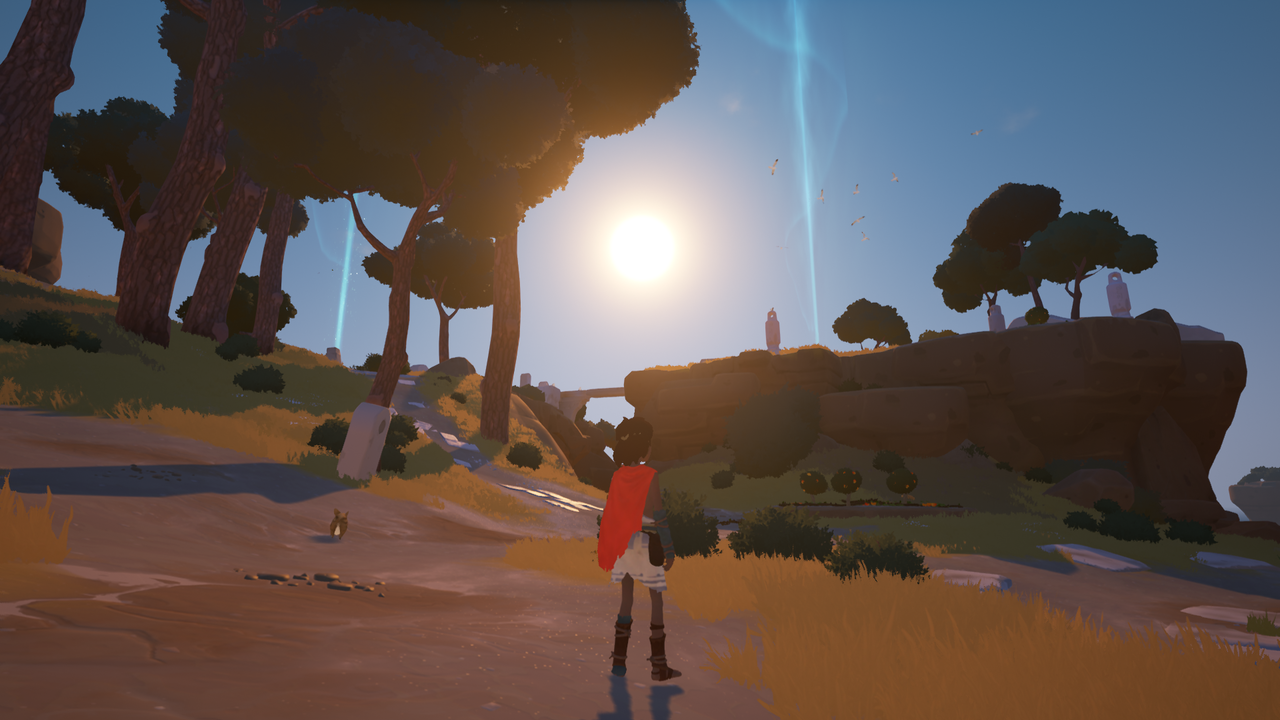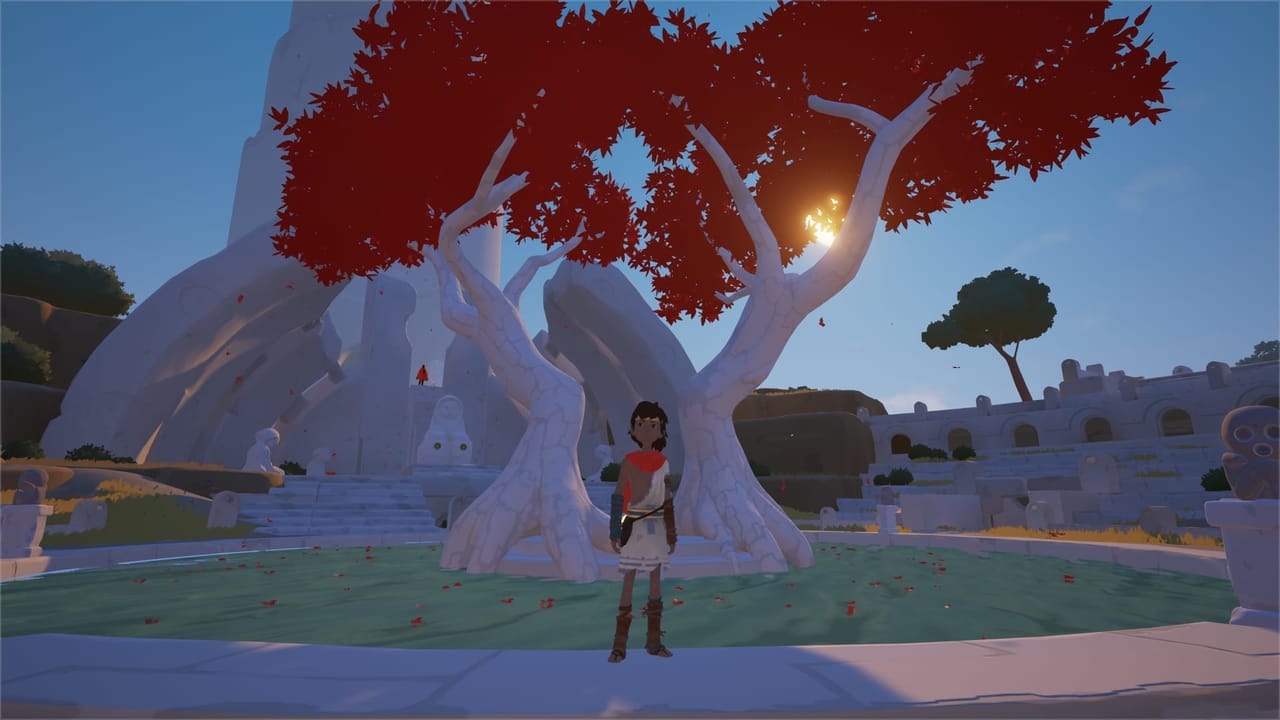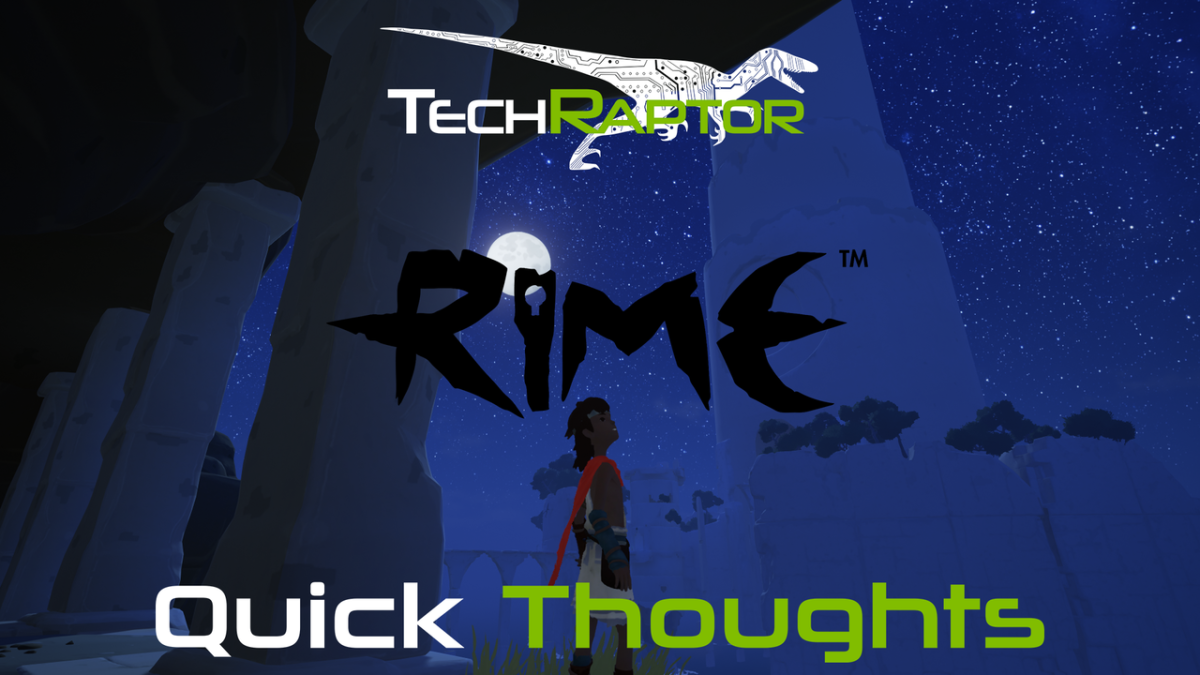RiME was announced at Gamescom 2013, and since then, it almost crashed and burned. In issue 305 of Edge Magazine, Tequila Works’ creative director Raul Rubio disclosed that the reception to its game actually terrified the team. Since they were only made up of 20 people, comparing its project to the likes of Ico, Journey, and The Legend of Zelda: The Wind Waker were lofty expectations to fulfill. In response, survival mechanics were implemented, over 500 puzzles could be completed, and the music was reworked. In addition, the developer chose to depart from Sony in order to go multi-platform and maintain IP rights. From the perspective of outsiders over the years, it seemed reasonable to guess that RiME was in major trouble, but half of this perception was simply due to the studio’s reticence while it worked on figuring out the soul behind RiME.
https://www.youtube.com/watch?v=E6m-lNbTsA4&feature=youtu.be
With multiple lessons learned, the game is finally here, but will you be in perfect harmony with its simpler design and direction? Or does its messy path to completion result in a dissonant tune not worth playing? Here’s what I’ve garnered from my first three hours with the game.

While Tequila Works may not be comfortable with the comparisons that have been drawn with RiME, they really can’t be helped. Its environmental puzzles, visual storytelling, and stripped gameplay remind me of Fumito Ueda’s Ico and The Last Guardian right from the start. You wash up on the shore of a mysterious, Mediterranean island that’s replete with ancient structures echoing Cycladic architecture found in Mykonos, Greece. You explore this semi-linear world to piece together its cryptic history and straightforward puzzles without any prompts or imposed direction. You’re also encouraged to go beyond the beaten path to uncover collectibles strewn across the land with some light platforming as well. From what I’ve experienced, it’s even simpler than Ueda’s titles. You don’t cooperate with any AI companions with the exception of a red fox that acts as a glorified yet adorable objective marker. There’s no combat. Even the puzzles are on the lighter side, not having many layers to them.
It speaks for the game’s objective to provide a laid-back experience, but this approach somewhat diminishes the grand vision it establishes with its eye-popping art direction and scope. In other words, it feels like the world should be more complex beneath the surface, but perhaps this has yet to come to fruition in our playthrough. Either way, the puzzles may be too simple for now, but I do like how they are solved with elements such as light, perspective, and sound. Figuring out how some objects react to your actions through experimentation is great, which is at its best with one of the most important mechanics: your voice. It’s incredibly similar to Journey’s chime mechanic, but I’d argue it has given me more surprises. Depending on where you use it, the boy might hum, shout, or even sing, which could in turn impact parts of the environment or unveil a secret you didn’t expect. It speaks for some of the game’s spirit of exploration by rewarding curiosity.

I’m playing on the standard PlayStation 4, and while the game runs at a comfortable 60 frames-per-second most of the time, some cutscenes and moments where the camera pans out have given way to drops and some disruptive stuttering. Besides these performance quibbles, they don’t fully detract from the gorgeous graphics. The lighting and cel-shaded style are remarkable, and the island is well realized as water breaks around rocks, wind blow through foliage, and various animals run or fly around you. However, I’d say one of my favorite aspects of the game is the breathtaking score. It seems to be going almost 90% of the time and never sounds repetitive. It’s strongly driven by sweeping violins and the piano, and melodies will even dynamically improvise depending on your actions. If anything, I know for sure that David Garcia Diaz’s reflective music is on-par with the soundtracks of RiME’s inspirations.
I’d say that concludes my initial impressions. RiME has an incredibly captivating art direction and music driving my intrigue with its world forward, and while the easy platforming and puzzle-solving could benefit from some deeper design and twists, I’m intimately intrigued to see if they evolve as I continue onward for the next 5 to 7 hours with its vague yet fascinating setting. If you’re interested in the game, it was released this past Friday on May 26th on PlayStation 4, Xbox One, and Windows. It will also release for the Switch sometime this year, which Tequila Works’ should be announcing in the coming weeks.
Are you already playing RiME? What do you think of it so far? Or have you finished it already? Swim to the comments section to let us know.







